California has a diverse habitat from high mountain peaks to coastal areas. Bugs thrive here in these areas, often across the state.
Some of these bugs can bite and many of the bites can even be venomous.
The following species of biting bugs are found around California or at least in a small area of the state.
Mostly active in the warmer months, some of these bugs can live throughout the year.
They can bite both outdoors and indoors, as some species make it indoors attracted to food or light.
From the likely species such as mosquitoes to the lesser-known mites that live and feed on human skin, bugs in California can often require medical attention as they begin to bite.
Apart from the medical conditions they may come with, these bugs may also come with a painful bite. Here are some of the typical species most likely to bite or sting in California.
Table of Contents
1. No-see-ums

So small they are barely visible No-see-ums (family Ceratopogonidae) are prevalent in areas of Southern California.
This area of the state is known for its warm climate which attracts these types of biting flies in droves.
While they like a warm habitat, No-see-ums also love plenty of moisture. They find this type of moisture among plants and in dense vegetation.
These flies can also be found around water, as they lay eggs directly in the water.
Some of the factors that facilitate their presence around Southern California homes include overwatering the lawn as well as puddling water.
The problem with these insects is they bite. They can even bite multiple times or in large numbers.
Bites of the species result in red itchy skin which may even get infected with lots of scratching.
This is why it’s recommended to trim vegetation and avoid overwatering plants, lawns, and potted plants, likely to have poor drainage.
A sudden rise in No-see-ums around the house may even signal a water leak problem that homeowners may not be aware of.
2. Horse and Deer Flies

Horse and Deer Flies (family Tabanidae) are some of the most painful types of biting insects in California.
These types of insects thrive around forests, next to animals, and in thick vegetation. California offers a diverse habitat, ideal for these types of flies.
It’s mostly the females of the species adapted to biting and eating blood as males feed on plant nectar.
Having many nectar-rich plants around the garden or animals around the house are some of the causes of seeing these insects around your home.
The problem with Horse and Deer flies is their bites are often serious and they should be dealt with immediately.
Washing the bitten area with soap and water helps clear out any bacteria they might be spreading.
Identified by their large eyes and by flying around horses and animals, these types of flies always need a blood meal to reproduce.
3. Black Flies

Black Flies (family Simuliidae) are mostly dangerous in tropical areas but may still bite in California.
This is among the multiple species that lay eggs in water.
Unlike other types of biting California bugs, Black Flies are mostly interested in laying eggs in flowing water such as streams or rivers.
The larvae of the species remain underwater until ready to pupate.
Females of the species are known for their painful bites which are coupled by venom injection.
It can take a few days for the bitten area to return to normal and for the itching to go away.
Black Flies don’t transmit diseases in California but they might transmit diseases further South.
This is a species that may be avoided by limited camping and daytime activities next to rivers where they are active around.
A multipurpose insect repellent spray can also help those out around the state’s streams and rivers, particularly people who like to spend time out in nature.
4. Chiggers

Chiggers aren’t as common in Western states such as California but are still present here.
Along a series of biting bugs, Chiggers are found in high moisture areas, vegetation, and around water.
They are most likely to bite exposed areas of the skin such as the ankles when walking around in shorts.
Plenty of exceptions apply, on the other hand. One or multiple chiggers may bite the skin even under the clothes once they get there.
Some of the least-worrying signs of their bites include mild rashes and red skin patches. These red skin spots can also turn larger, radiating as they are scratched.
Unlike many other biting bugs, chiggers are known for cluster bites. These are a group of bites, often in their tens.
Often more itchy than other bites given they are numerous around the body, chigger bites can benefit from itchy-soothing creams.
5. Kissing Bugs

Chagas disease caused by Kissing Bugs is rare to very rare in California. These bugs can still bite here.
Some of the places where these bugs live include the bases of hills but they can also live in urban areas and make it indoors attracted to light at night.
Some of their preferred biting times include nighttime.
Indoors, they can be attracted to light and bite sleeping house members. They can also bite those out camping.
Catching these dark bugs is quite difficult as their bites are painful per se. They are itchy, on the other hand, but these itches are only noted in the morning once the kissing bugs are gone.
Known for biting the area of the mouth but not for spreading Chagas disease.
Higher cases of Chagas disease are reported in the area of Los Angeles for it’s a place with a considerable Latin American population.
While this disease can be picked up in California, it’s most likely to happen during travel time to Latin America.
6. Fire Ants

Among the biting bugs of California that are found around homes, Fire Ants are quite numerous.
Living around the yard and eating almost anything it can find from high fats to plant material, they are often attracted to patios, outdoor kitchens, and other locations with food.
Various species of biting fire ants live here and their bites are often numerous.
Many ants can bite, especially when their mound nests are disturbed.
The bites of these ants result in red skin spots which are itchy. In some cases, the itchiness is elevated to urticaria levels.
As with many bites, urticaria can lead to infected skin if scratched in excess.
Infections and severe itching or pain that doesn’t go away mandate a visit to the hospital.
Most types of fire ant bites in California can be treated with soothing balms and even with homemade remedies.
Removing the nests of these ants from the property is important when it comes to keeping them out of the house.
This might even require the help of a professional as California fire ants are known to be resilient and even survive flooding.
7. Bedbugs
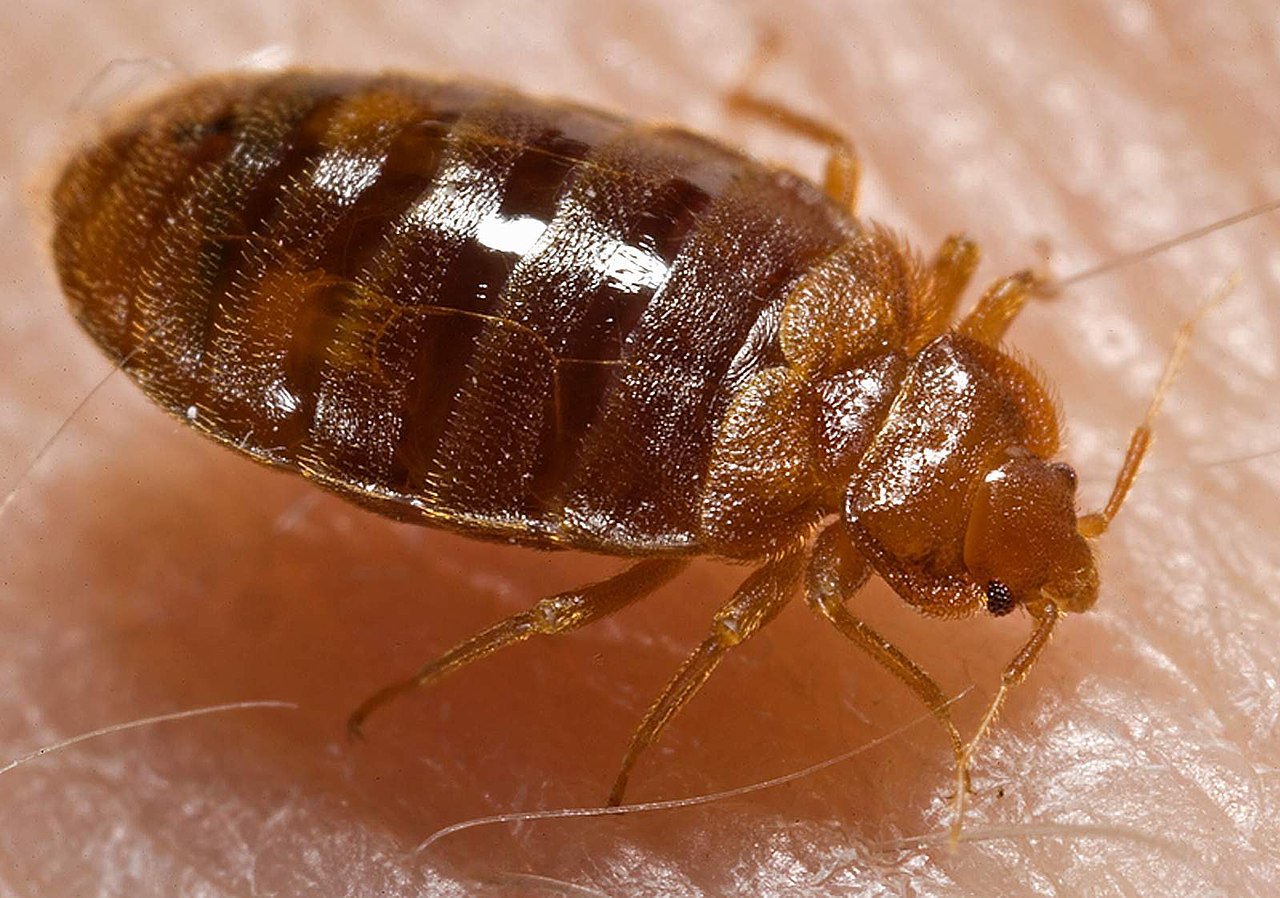
A common problem in some homes, bedbugs are among the biting species of bugs that are transmitted by being carried from one place to another.
These bugs can also crawl their way indoors, mainly through wall cracks, gaps, or open windows.
Biting on pets and humans, bedbugs regularly stay within the same area humans or pets sleep. While often found in other areas of the house, most bed bugs are found within feet of a sleeping place such as a bed.
Some of the biting signs of the species include red spots or welts on the skin. They can be seen on the face, neck, chest, arms, or legs with small infestations or anywhere on the body with large infestations.
A seed-shaped species, bedbugs also live red or rust-colored marks on the sheets.
These spots are easiest to spot on white sheets.
Bedbugs don’t like to stay out in the open once fed.
They often hide under the mattress or in the seams of mattresses. If the mattress is perfectly flat or square-shaped, it can hide behind furniture or under pet beds.
8. Mosquitoes

Mosquitoes are a considerable problem in California. There’s even a Mosquito awareness week in the state.
Some of the main reasons mosquitoes are prevalent here include the high number of marshes, canals, lakes, rivers, streams, and high-humidity areas mosquitoes love.
While mosquitoes here might not spread Zika or West Nile viruses such as those in other areas, they can still breed in very high numbers.
Eliminating these types of biting insects from the state is often subject to clearing out the house and the yard.
Almost any type of puddling water can attract biting mosquitoes around the house.
This includes buckets of water, plant pots, pools, barrels, and other objects where rainwater can stagnate.
Objects as small as a water bottle cap can be enough for mosquitoes to lay eggs in.
Some other repelling methods include DEET sprays and essential oils such as those of eucalyptus sprayed around the yard.
9. Fleas

Fleas are some of the tiniest biting insects in California.
They are commonly found in pets and wild animals and are known to jump. Not even reaching a size of 1 inch, these are some of the smallest biting bugs in the state to watch out for.
Cats and dogs are known to carry specific fleas. Reddish-Brown Cat Fleas are among the most common types of fleas you need to watch out for here.
Some of the best methods to reduce the risks of having these fleas in the house include regularly checking pets and limiting their contact with other pets that may be carrying fleas.
Surviving up to 2 years, fleas lay eggs that pupate outside of a host. They need a host for a blood meal, on the other hand.
This is why fleas are always looking for a new host and can easily be picked up in areas of high moisture and plenty of vegetation.
Coastal areas and Central Valley areas are among the habitats of California where flea numbers are always higher.
10. Ticks
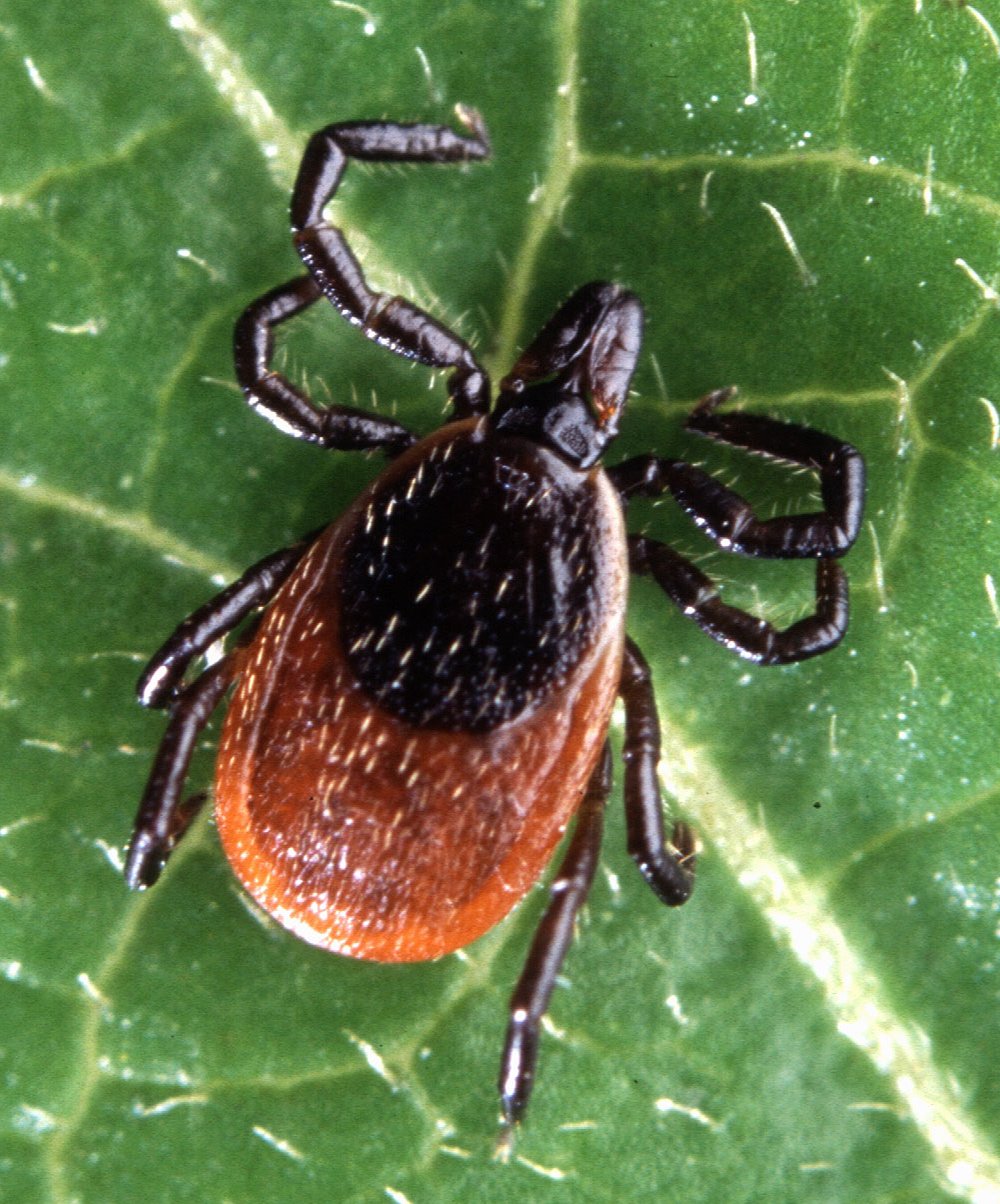
Western Black Ticks, Pacific Coast Ticks, and Brown Dog ticks are among the tick species that can bite in California.
Attaching themselves deep into the skin, these ticks can be picked up either in vegetation or at home, around dogs and their sleeping areas.
Ticks have a potentially-dangerous bite. Spotted fever and Lyme diseases are potentially spread by the species, albeit, to a lesser extent in California.
Ticks are most common in the warmest months but they do need plenty of moisture to grow and to go through all of their life stages.
Biting bugs such as ticks go from larvae to nymphs and to adult nymphs throughout their life stages.
These development cycles can be slower in lower temperatures, which means ticks tend not to be as active or as present in cooler periods.
A common space ticks prefer in warm weather across the state is grassy fields or vegetation-rich areas at the edges of forests.
11. Lice
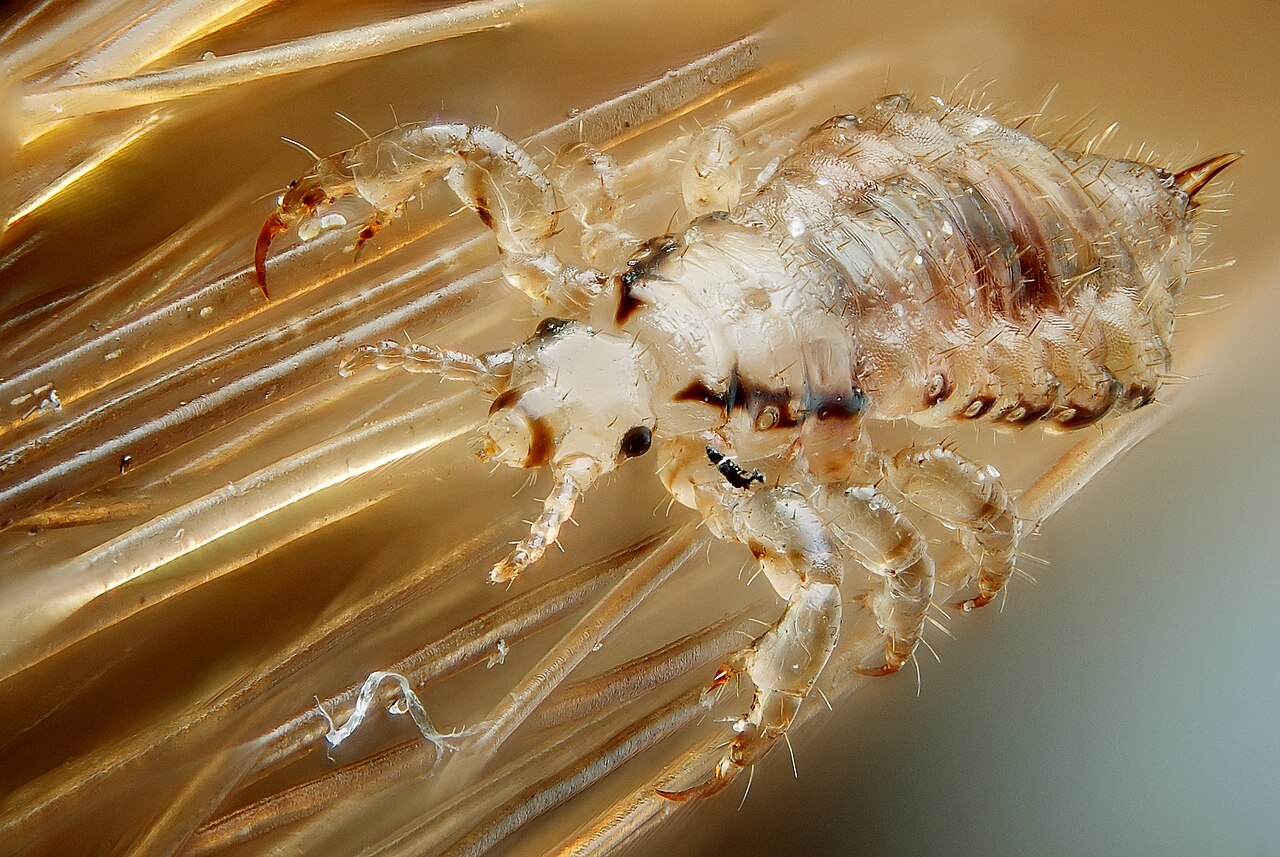
Lice are parasitic insects that feed on blood. They require blood to live and breed and often feed on human blood.
These types of bugs, unlike most biting bugs of California, need close touching contact to spread.
Lice cannot jump or fly which means direct human-to-human contact is one of the first methods of spread.
Lice can also be picked up from infested animals.
Hair lice are among the most common types of lice to spread to humans.
The homeless are particularly vulnerable to head lice infestation in California as they contact other people carrying lice.
Some local research also suggests head lice is an issue found in some high-school-age teenagers.
Particularly vulnerable teens coming from a habitat of poor hygiene are typically exposed to head lice and need proper information or education on how to keep them away.
Some of the fastest anti-head lice treatments are sold in pharmacies and can be purchased without a medical prescription.
12. Wasps

There’s an almost endless list of wasps that can bite which also live in California. Some of these wasps are not likely to live close to inhabited areas while others are a common sight in areas with dense populations.
The Mud dauber (Sceliphron caementarium) wasp is one of the 4.000 species of the state which can bite.
Its bite isn’t highly painful, dangerous, or highly common. These typical black and yellow wasps only bite when threatened.
Unlike the bites of bees or other types of wasps, its bite is often superficial. Some even note they barely feel it at all.
Different types of reactions are possible following the bites of these wasps, particularly of those that have more dangerous bites.
While Mud Daubers have a mild bite, the bite of species such as The Cow Killer (Dasymutilla occidentalis) wasps are particularly painful and may even prompt a visit to the hospital.
13. Bees

Bees live in California in high numbers. With plenty of flowers to visit, the state is home to different species of bees.
Honey bees are among the most numerous here, albeit not particularly aggressive or possessing the most painful sting.
This is why bees that make honey in California like to nest in sheltered areas where they aren’t bothered.
They can sting if their nest is threatened. These nests can be found in tree cavities or in other types of cavities as well as in bee hives.
While not a good idea to approach these nests, multiple bees can bite.
The bite of a single honey bee comes with instant pain, but not the highest level of pain.
Bites on the arms, legs, and torso can hurt, but not as much as the bites on the face, which are believed to be the most painful when it comes to the typical sting of a honey bee.
14. Western Black Widow

As in most US states, spiders can become a stinging problem. But not all spiders are the same as some are more dangerous the others.
Spiders rarely get more dangerous than The Western Black Widow (Latrodectus hesperus).
This is an all-black species with a red hourglass marking on the abdomen, signaling you should back away or remove it with caution when spotted indoors.
The spider may not be particularly aggressive and it will not willingly follow people around to bite.
It can bite when handled or when roughly handled, on the other hand.
Females are much more likely to bite but still, the symptoms of the bite may be absent in some cases.
In others, the symptoms include nausea and even sweating.
More serious reactions to Western Black Widow bites include fever, a signal a doctor’s visit is mandatory.
Not all cases that end up in the hospital are given antivenom. The bite of the species is only treated this way in the case of the more severe reactions.
15. Brown Widow

Just recently introduced to California, Brown Widows (Latrodectus geometricus) also bite. They lead to latrodectism reactions.
Bites of these spiders aren’t as dangerous as the bites of Black Widows but they can be, in rare circumstances.
Pregnancy and early life are among the instances when humans are the most exposed to more severe Brown Widow reactions.
One of the interesting reactions of Brown Widow bites is a pain in waves. It may seem that pain may have passed only for it to return the following day.
This can go on for about a week.
Even more, while not as venomous, Brown Widows are aggressive and often eat other spiders, including The Western Black Widow.
This aggressiveness towards Black Widows is widespread as it turns out their populations are declining the more Brown Widows spread.
While beneficial to humans since they kill Western Black Widows, Brown Widows may still bite and still need to be avoided.
16. Centipedes

Centipedes look scary. These multi-legged creatures are found in high moisture areas in high numbers.
While they can bite as spiders, centipedes in California often lead to different reactions.
For example, the bitten area can often harden. Hard skin, often red, is specific to the bitten area.
Even more, bleeding in the bitten area is also specific in the more severe reactions to its bite.
As with spiders, the bite symptoms may also vary depending on the area of the body.
Extremities can suffer from tingling or numbing sensations. A bitten finger is likely to feel numb and become swollen soon after a bite.
Symptoms outside of the bitten area are also specific to centipede bites. In some cases, red streaks along the skin are visible outside the bitten area.
In most cases, these symptoms require no specific medical attention as they tend to go away without intervention.
17. Scorpions

Scorpions are present in California’s vast habitats. Various species of scorpions live here as the state provides plenty of food for them.
This is the case of the local California Common Scorpion (Paruroctonus silvestrii), a species that like California’s chaparral.
A small scorpion, even an adult California Common Scorpion may not grow longer than 2 inches.
Dominated by amber-brown nuances, this is a species that may not sting at all, sting once, or sting multiple times.
The way it sees a threat marks how it reacts to it and if it stings.
For humans, the sting of The California Common Scorpion is not life-threatening.
While painful and venomous, it’s not as dangerous as the sting of more potent venom scorpions.
Washing the area and applying ice packs are among the typical post-sting recommendations, especially in the absence of other more serious reactions.
18. Wheel Bugs
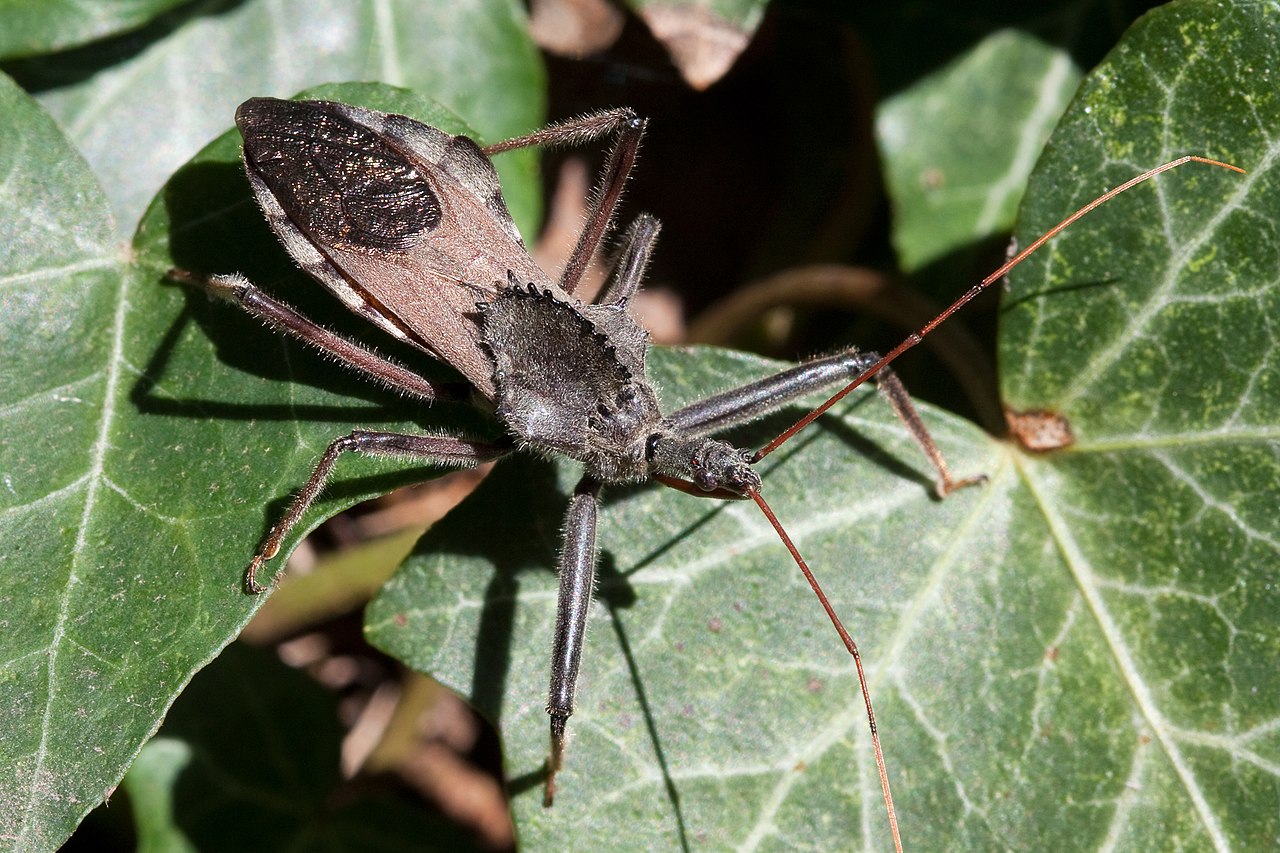
Wheel bugs aren’t as present in California as in other Southern states, but there are still well-established here.
The problem with their stings is that they are serious in terms of pain, not as much as in terms of a life-threatening bite.
Wheel bugs have a potent sting, often more painful than that of a wasp or a spider.
In fact, it’s not even uncommon for pain to persist for weeks.
Another common issue people face with these biting bugs is a hole in the skin which also doesn’t heel for at least a few days.
Luckily, Wheel bugs only bite when they are disturbed, poked, or handled.
Growing to a size of up to 1.25 inches, Wheel bugs are known predators and among the beneficial species that help control caterpillar outbreaks.
19. Scabies
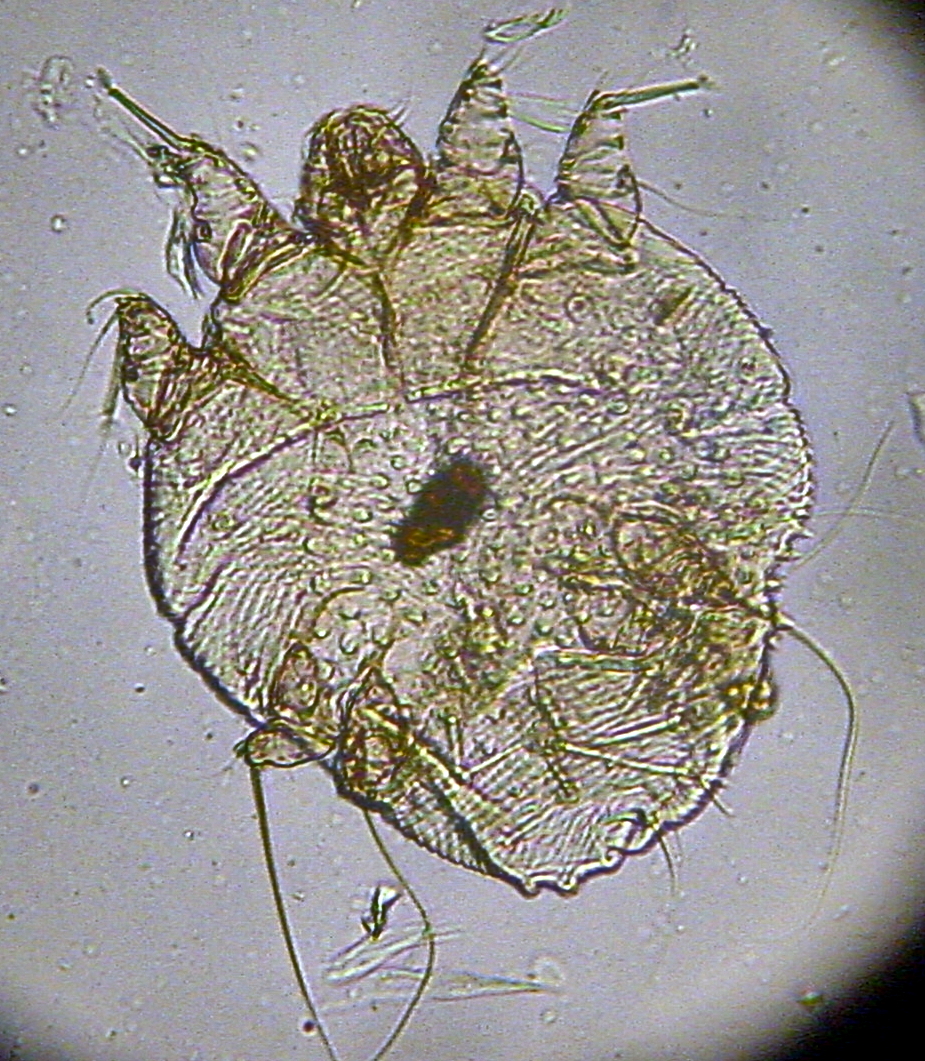
Scabies is transmitted among people of California in close contact.
This is a skin condition and the result of scabies mites.
One of the worst things about it is that’s diagnosed when it might be widespread on the skin.
Itchy skin specific to scabies is often spotted between the fingers. At the same time, it is also common on the hands, specifically on the palms.
Preventive measures include limiting contact with people that have scabies while treatment is medical-based.
Specific permethrin-based creams are often recommended for those dealing with scabies.
Given scabies spread by contact, the infected person may need to be isolated at home. Children with scabies are often kept out of school until their treatment completes.
20. Rove Beetles

Rove Beetles (Staphylinidae) are found in decaying vegetation or animal matter.
They don’t bite and they don’t sting, but they lead to some of the most improbable skin-level reactions.
These bugs are known to cause Paederus dermatitis, also known as beetle rash.
People that have come in contact with the bug are impacted by a substance it releases which causes bruising, often over large sections of the skin and body.
Even more, these bruises can last days to weeks, in extreme cases.
The problem with these bruises is they can’t be avoided at times. Gardening and camping are among the situations when humans may need to be in contact with the bug.
One way to avoid contact with the species is to wear gloves when dealing with piles of dead vegetation.
Another method to avoid the bugs is to keep bug lights further away from the house as Rove beetles are attracted to them.
21. Caterpillars

Caterpillars may also come in contact with the skin by accident, similar to Rove Beetles.
Most caterpillars are harmless to humans but hairy caterpillars or spike-covered caterpillars are a reason for concern.
The hairs of the species and their spikes may be irritating to the skin.
The western Sheep Moth Caterpillar (Hemileuca eglanterina) is one of the local species with irritating short spikes. Their spikes are thin and can break into the skin upon contact.
Some of the highest risk of being stung by Western Sheep Moth Caterpillar is around willows and wild roses.
These caterpillars use them as hosts and feed on their leaves.
They can simply fall onto the skin of those under these trees or they can be picked up without knowing they can be irritating.
Some of the more severe irritations lead to urticaria, a more acute type of skin irritation.
Caterpillars of the species are expected to sting at least several people up to September each year.